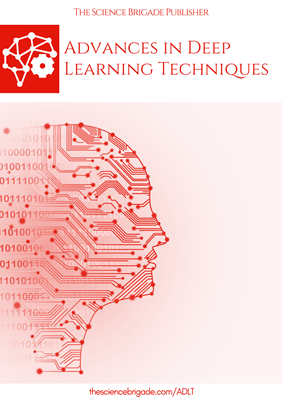Artificial Intelligence for Scalable Cloud Systems: Innovations in Resource Optimization
Keywords:
Artificial Intelligence, Cloud Computing, Resource Optimization, Dynamic ProvisioningAbstract
Resource optimization for intelligent and scalable solution for exponential growth of cloud computing demands which ensures performance efficiency, cost-effectiveness, and reliability. The objective of this paper is to explore the integration of artificial intelligence (AI) techniques which includes machine learning, deep reinforcement learning, and predictive analytics in cloud infrastructure management for dynamic resource provisioning, workload prediction, and anomaly detection.
Downloads
References
M. Armbrust, A. Fox, R. Griffith, et al., "A view of cloud computing," Commun. ACM, vol. 53, no. 4, pp. 50–58, 2010.
M. Satyanarayanan, "The emergence of edge computing," Computer, vol. 50, no. 1, pp. 30–39, Jan. 2017.
D. P. Ali, M. Abolhasan, and A. S. Jay, "Machine learning for cloud resource management: Challenges, methodologies, and future directions," IEEE Access, vol. 9, pp. 118259–118282, 2021.
X. Liu, Z. Liu, and L. Wang, "Resource optimization for cloud computing using machine learning techniques: A survey," Future Gener. Comput. Syst., vol. 118, pp. 188–209, Apr. 2021.
A. G. Gotsman, A. O. Hodge, and D. Y. Liu, "Reinforcement learning for dynamic cloud resource provisioning," IEEE Trans. Parallel Distrib. Syst., vol. 32, no. 4, pp. 954–965, Apr. 2021.
Y. Zhang, Q. Li, and Y. Yang, "Energy-efficient cloud computing with machine learning and reinforcement learning algorithms," IEEE Trans. Cloud Comput., vol. 10, no. 4, pp. 1221–1233, Oct.-Dec. 2022.
S. Bhat, S. Rajendran, and V. Iyer, "Autonomous cloud resource optimization using deep reinforcement learning," IEEE Trans. Cloud Comput., vol. 10, no. 6, pp. 1031–1043, Nov.-Dec. 2022.
C. Zhang, Y. Zhang, and X. Liu, "Predictive scaling for cloud systems: A deep learning approach," IEEE Trans. Netw. Service Manag., vol. 18, no. 3, pp. 2156–2173, Sep. 2021.
M. Da Silva, "Cloud computing and the need for self-optimizing systems," IEEE Cloud Comput., vol. 6, no. 2, pp. 30–38, May-June 2020.
A. M. Rahman, M. D. Qadir, and A. J. Leith, "AI-driven resource management for efficient cloud computing," IEEE Comput. Soc. Conf. Comput. Vis. Pattern Recognit., pp. 2334–2341, Jun. 2021.
F. B. Bastani and M. H. Ghodrat, "Federated learning for cloud resource optimization: A survey," IEEE Access, vol. 9, pp. 143987–144010, 2021.
S. Kumar, M. Gupta, and A. Soni, "Hybrid cloud resource management using machine learning for optimal resource allocation," IEEE Trans. Netw. Service Manag., vol. 19, no. 2, pp. 1122–1135, Jun. 2022.
L. Tan, Z. Xiao, and Q. Zhang, "AI and cloud computing convergence for efficient resource allocation," IEEE Commun. Mag., vol. 59, no. 4, pp. 96–103, Apr. 2021.
A. H. Zahir and R. E. Barakabitze, "AI-based resource scheduling in cloud computing: Trends, challenges, and opportunities," IEEE Internet Things J., vol. 8, no. 1, pp. 49–58, Jan. 2021.
M. K. Sharma and S. K. Gupta, "AI-driven decision-making in cloud systems: A resource management perspective," IEEE Access, vol. 8, pp. 81977–81991, 2020.
N. Y. Chong, P. Chen, and X. Li, "Cloud computing and big data: A review of scalable AI resource allocation," IEEE Trans. Big Data, vol. 7, no. 2, pp. 372–383, Jun. 2020.
G. A. Nand, "Energy-aware resource scheduling and AI: Techniques for scalable cloud infrastructure," IEEE Access, vol. 9, pp. 124455–124470, 2021.
M. O. Ferreira, P. A. Palang, and V. Bhaskaran, "Energy-aware AI solutions for efficient cloud computing," IEEE Trans. Comput., vol. 70, no. 7, pp. 1127–1137, Jul. 2021.
M. H. Parvez and K. Z. Ibrahim, "AI for cloud data management and optimization in federated clouds," IEEE Cloud Comput., vol. 9, no. 1, pp. 18–27, Jan.-Feb. 2022.
M. Siddiqui, A. K. Soni, and M. Shankar, "AI-driven fault-tolerant resource management in cloud systems," IEEE Trans. Cloud Comput., vol. 11, no. 5, pp. 1228–1239, Sep.-Oct. 2023.
Downloads
Published
Issue
Section
License

This work is licensed under a Creative Commons Attribution-NonCommercial-ShareAlike 4.0 International License.
License Terms
Ownership and Licensing:
Authors of this research paper submitted to the journal owned and operated by The Science Brigade Group retain the copyright of their work while granting the journal certain rights. Authors maintain ownership of the copyright and have granted the journal a right of first publication. Simultaneously, authors agreed to license their research papers under the Creative Commons Attribution-NonCommercial-ShareAlike 4.0 International (CC BY-NC-SA 4.0) License.
License Permissions:
Under the CC BY-NC-SA 4.0 License, others are permitted to share and adapt the work, as long as proper attribution is given to the authors and acknowledgement is made of the initial publication in the Journal. This license allows for the broad dissemination and utilization of research papers.
Additional Distribution Arrangements:
Authors are free to enter into separate contractual arrangements for the non-exclusive distribution of the journal's published version of the work. This may include posting the work to institutional repositories, publishing it in journals or books, or other forms of dissemination. In such cases, authors are requested to acknowledge the initial publication of the work in this Journal.
Online Posting:
Authors are encouraged to share their work online, including in institutional repositories, disciplinary repositories, or on their personal websites. This permission applies both prior to and during the submission process to the Journal. Online sharing enhances the visibility and accessibility of the research papers.
Responsibility and Liability:
Authors are responsible for ensuring that their research papers do not infringe upon the copyright, privacy, or other rights of any third party. The Science Brigade Publishers disclaim any liability or responsibility for any copyright infringement or violation of third-party rights in the research papers.



